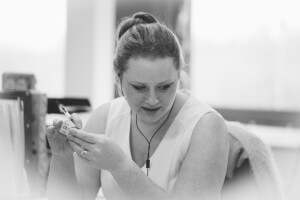
Second Exceptional Hardship Application
I was recently very involved in the case of a client charged with speeding – 78mph in a 70mph limit on a motorway.
Unfortunately due to him already having points on his licence he fell to be disqualified for 6 months as a totter. To complicate matters he had previously been in the same situation within the past 3 years and had already made an Exceptional Hardship application at that time. The law states that a person cannot make more than one application to the court using the same grounds within a 3 year period… and my client required a second Exceptional Hardship application.
His previous application was based upon the impact the loss of licence would have on his employment – and as a Sales Director required to manage a UK wide team this was certainly the strongest grounds he had. But this did mean that this was not something I could use for his second Exceptional Hardship application.
I started my case preparation by applying to the courts for the full note of the previous hearing. I needed to ensure that I was funny appraised of the court’s sentencing statement and of the evidence put before them. Knowing we needed not to rely on the most commonly used foundations posed a different sort of challenge, to find new grounds for this second Exceptional Hardship application.
As lawyers, we are privy to a great deal of personal, and in many ways, highly sensitive, information. For any Exceptional Hardship Application this will usually involve a client’s financial position, their relationships with their family and friends, their employment status. I can’t explain the feeling exactly, but it’s certainly one of trust, especially in this particular case.
From speaking with my client it became clear that the loss of his licence would have most impact on his family life. He would need to stay away from home more often, he would be unavailable to assist his fiancé with the day to day matters and, most importantly, he would be unable to assist her in the event of a medical emergency. This may not sound like much, how often is an emergency really going to occur? But for this family, with the past few years they had experienced health wise, this was a real concern. I spent a lot of time speaking with my client and his fiancé, getting to know them, and I felt very privileged to have them speak so openly with me about their lives.
We obtained medical documentation detailing her illness to support his need for his licence, and we provided detailed diaries for both of them, trying to cover all angles possible for his second Exceptional Hardship application. Our client was represented in court by one of our expert Barristers from our London chambers, Emma Shafton, who put their case to the court and guided them both through their testimony.
Unfortunately the court, whilst finding that there would be hardship, did not believe the obstacles to be insurmountable. They found that the client’s financial position suggested that in the case of an emergency that funds would be available to ensure that he was able to be with her. They were however swayed by the case put to them and sentenced our client to 6 months disqualification when the law suggested a 12 month disqualification as a second ‘totting’ situation within three years.
Our client attended court knowing that it was not the strongest of applications but wanting to try and needing to know that he had tried, that they had tried. They left the court, disappointed but not unhappy, they were ready to start moving forward with their lives, which did include their wedding just a few days later!
At Forrest Williams we tailor each case preparation plan to each client. We do not have a ‘one-size-fits-all’ approach. If you are due in court and facing a disqualification then give the Forrest Williams team a call. We promise to listen to you and to treat you as the individual you are and to work with you to ensure that the courts see you and not just the offence.
Tags: case studies

